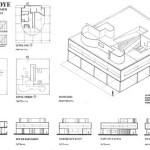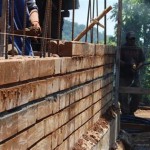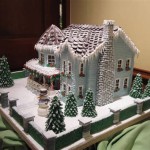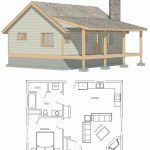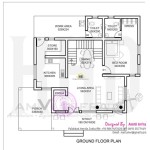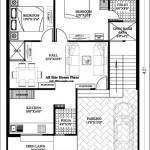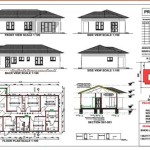House Plans for Duplex Homes: Design, Functionality, and Investment
Duplex homes, defined as residential structures containing two separate living units within a single building, provide a unique opportunity for homeowners and investors alike. These properties can serve as a means of generating rental income, housing extended family, or simply maximizing land usage. The successful implementation of a duplex project hinges on careful planning, with house plans serving as the foundational blueprint for achieving desired outcomes. Understanding the nuances of duplex design, functionality, and the investment potential is crucial before embarking on such a project.
House plans for duplex homes encompass a wide range of architectural styles and layouts. These plans must consider efficiency, privacy, and adherence to local building codes and regulations. A well-designed duplex plan optimizes space utilization, ensures comfortable living conditions for both units, and enhances the property's overall appeal and market value. The selection of an appropriate house plan is a critical decision that directly impacts the long-term success of the venture.
The following sections will explore essential aspects of duplex house plans, focusing on key considerations for design, functionality, and investment potential.
Optimizing Space and Layout for Duplex Living
Effective space utilization is paramount in duplex design. The floor plan should provide ample living space for each unit while maximizing the overall footprint of the building. This involves careful consideration of room sizes, circulation patterns, and the placement of essential amenities. A well-designed layout minimizes wasted space and promotes comfortable and efficient living.
Several layout options exist for duplex homes, each with its own set of advantages and disadvantages. Side-by-side duplexes, where the units are situated adjacent to each other, are a common design choice. This configuration allows for separate entrances on opposite sides of the building, promoting privacy and independence. Above-and-below duplexes, with one unit located on the ground floor and the other on the upper level, offer a different approach to space division. This layout can be particularly effective on smaller lots or in areas with height restrictions.
Designing for privacy is a crucial consideration. Shared walls should be adequately soundproofed to minimize noise transmission between units. Separate entrances, private outdoor spaces such as patios or balconies, and thoughtful landscaping contribute to creating a sense of independence for each tenant. Careful attention to window placement can also enhance privacy by minimizing views from one unit into another.
Interior layouts within each unit should prioritize functionality and comfort. Open-concept living areas, featuring a combined kitchen, dining, and living room, are popular choices for contemporary duplex designs. These layouts promote a sense of spaciousness and encourage social interaction. Well-designed kitchens with ample counter space and storage are essential for meeting the needs of residents. Bathrooms should be conveniently located and adequately sized, while bedrooms should provide sufficient space for sleeping and personal belongings.
Accessibility is another important factor to consider, particularly if the duplex is intended for long-term rentals or for housing family members with mobility limitations. Incorporating features such as wider doorways, accessible bathrooms, and ramps or elevators can enhance the property's appeal and cater to a wider range of potential residents. Adherence to accessibility standards, such as those outlined in the Americans with Disabilities Act (ADA), may be required in certain jurisdictions.
The strategic placement of utilities is also critical in optimizing space and layout. Separate utility meters for each unit allow for independent billing and prevent disputes among tenants. HVAC systems, plumbing lines, and electrical wiring should be carefully planned to ensure efficient operation and minimize maintenance requirements. Proper ventilation is essential for maintaining healthy indoor air quality in both units.
Key Architectural Elements and Design Considerations
The architectural style of a duplex home contributes significantly to its overall aesthetic appeal and market value. A wide range of styles can be adapted to duplex designs, from traditional to contemporary. The selection of an appropriate style should consider the surrounding neighborhood, the preferences of potential residents, and the overall goals of the project.
Roofing is a critical element of duplex design, both for its structural integrity and its visual impact. Gable roofs, hip roofs, and shed roofs are common choices for duplex homes. The materials used for roofing, such as asphalt shingles, metal, or tile, should be durable, weather-resistant, and aesthetically pleasing. Proper insulation in the roof is essential for energy efficiency and climate control.
Exterior cladding materials play a significant role in the building's overall appearance and protection from the elements. Options include brick, siding, stucco, and stone. The choice of cladding material should consider factors such as cost, durability, maintenance requirements, and aesthetic compatibility with the architectural style. Proper installation is essential to prevent water damage and ensure long-term performance.
Window and door design should complement the architectural style and provide adequate natural light and ventilation. Energy-efficient windows and doors can significantly reduce heating and cooling costs. The placement of windows should consider privacy and security, while the size and style of doors should be appropriate for the overall scale of the building.
Landscaping enhances the curb appeal of a duplex and creates a welcoming environment for residents. Well-maintained lawns, shrubs, trees, and flower beds contribute to the property's visual appeal and can increase its market value. The landscaping should be designed to require minimal maintenance and to provide privacy for each unit.
Consideration should be given to outdoor living spaces such as patios, decks, or balconies. These areas provide residents with opportunities to relax, socialize, and enjoy the outdoors. The design of outdoor living spaces should consider privacy, sun exposure, and accessibility. Outdoor lighting can enhance the ambiance and security of these areas.
Interior design elements, such as flooring, paint colors, and lighting fixtures, contribute to the overall comfort and aesthetic appeal of each unit. Neutral color palettes are often preferred for rental properties, as they appeal to a wide range of tastes. Durable and easy-to-clean flooring materials, such as tile or laminate, are practical choices for high-traffic areas. Energy-efficient lighting fixtures can reduce electricity consumption and lower utility bills.
Maximizing Investment Potential and Rental Income
Duplex homes offer a variety of investment opportunities. They can be used as rental properties, providing a steady stream of income for the owner. Alternatively, one unit can be occupied by the owner while the other is rented out, helping to offset mortgage payments and other expenses. Duplexes can also be developed and sold as individual units, generating a profit for the developer.
The location of a duplex is a critical factor in determining its investment potential. Properties located in desirable neighborhoods with good schools, convenient access to amenities, and low crime rates tend to command higher rents and appreciate in value more rapidly. Proximity to employment centers, transportation hubs, and shopping areas can also enhance the property's appeal to potential renters. Comprehensive market research is essential before investing in a duplex to ensure that it is located in a promising area.
Rental rates should be carefully calculated to maximize income while remaining competitive with other properties in the area. Factors to consider when setting rental rates include the size and layout of the units, the amenities offered, the location of the property, and the condition of the building. Conducting a comparative market analysis (CMA) can help determine appropriate rental rates.
Minimizing operating expenses is crucial for maximizing the profitability of a duplex. Energy-efficient appliances, proper insulation, and low-maintenance landscaping can help reduce utility bills and maintenance costs. Regular maintenance and repairs are essential for preserving the value of the property and attracting and retaining tenants. Establishing a preventative maintenance schedule can help identify and address potential problems before they escalate into costly repairs.
Tenant screening is an important aspect of managing a rental duplex. Thoroughly screening potential tenants, including conducting background checks, verifying income and employment, and contacting references, can help reduce the risk of problems such as late rent payments, property damage, or evictions. A well-defined lease agreement that clearly outlines the rights and responsibilities of both the landlord and the tenant is essential for protecting the interests of both parties.
Property management can be handled either by the owner or by a professional property management company. Owners who are willing to dedicate the time and effort required to manage the property themselves can save on management fees. However, professional property management companies offer a range of services, including tenant screening, rent collection, maintenance and repairs, and legal compliance. Hiring a property management company can free up the owner's time and provide peace of mind.
Financing a duplex purchase or construction project typically involves obtaining a mortgage from a lender. The interest rate and terms of the mortgage can significantly impact the profitability of the investment. Shopping around for the best mortgage rates and terms is essential. Exploring different financing options, such as conventional loans, FHA loans, and VA loans, can help find the most suitable financing solution.
House Plan Of The Week Multigenerational Duplex Builder
Top 10 Duplex Plans That Look Like Single Family Homes Houseplans Blog Com

Duplex Floor Plans N House Design Map Model Plan

Multi Family Duplex House Plans 8 Bedroom Home Modern Singapore

Discover The Best Duplex Designs Floor Plans For Your Dream Home Beautiful Homes

Best Ing Duplex Home Designs Architectural Family House Plans Design

Top 10 Duplex Plans That Look Like Single Family Homes Houseplans Blog Com
House Plan Of The Week Multigenerational Duplex Builder

Duplex Floor Plans House The Plan

Duplex House Plans Book Home Floor


